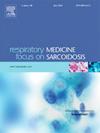Outcomes of high-flow versus conventional oxygen therapy in adult medical and post-surgical oncology patients: A systematic review and meta-analysis
IF 3.5
3区 医学
Q2 CARDIAC & CARDIOVASCULAR SYSTEMS
引用次数: 0
Abstract
Background
While the outcomes of patients with cancer have improved, the prognosis for those requiring invasive mechanical ventilation (IMV) remains poor. High-flow nasal cannula (HFNC) can be used as a management strategy to avoid IMV.
Objectives
To determine the efficacy and safety of HFNC compared to other non-invasive oxygenation techniques among patients with cancer.
Methods
This systematic review was prospectively registered and followed PRISMA guidelines. Literature searches were conducted from inception to May 17th, 2023, across MEDLINE, EMBASE, CINAHL, CENTRAL, and Web of Science. We included observational studies and randomized controlled trials enrolling adults (≥18 years of age) with an underlying cancer diagnosis that compared HFNC to at least one other form of non-invasive oxygenation.
Results
Seven (n = 501) medical and 4 (n = 379) post-esophagectomy studies were included. There were no significant differences in all-cause mortality (n = 573; RR 0.81; 95 % CI: 0.48 to 1.36; I2 = 9 %) or invasive mechanical ventilation (IMV) (n = 540; RR 0.89; 95 % CI: 0.62 to 1.28; I2 = 47 %). HFNC was associated with lower nose/mouth dryness overall (n = 398; RR 0.37; 95 % CI: 0.24 to 0.58; I2 = 20 %). Across post-esophagectomy studies, HFNC was associated with shorter hospital length of stay (LOS) (n = 309; MD -88.73 h; 95 % CI: 108.94 to −68.52 h; I2 = 0 %). Among medical studies, one study reported a shorter hospital LOS.
Conclusions
Among hospitalized patients with cancer, there were no significant differences in mortality, IMV use, ICU LOS, or skin damage. Across both cohorts, HFNC was associated with shorter hospital LOS and lower rates of nose/mouth dryness compared to other non-invasive oxygen techniques.
Prospero registration
CRD42022303621.
背景:虽然癌症患者的预后有所改善,但需要侵入性机械通气(IMV)的患者预后仍然很差。高流量鼻插管(HFNC)可作为避免机械通气的管理策略:确定高流量鼻插管与其他非侵入性吸氧技术相比在癌症患者中的有效性和安全性:该系统性综述为前瞻性注册,遵循 PRISMA 指南。从开始到 2023 年 5 月 17 日,我们在 MEDLINE、EMBASE、CINAHL、CENTRAL 和 Web of Science 上进行了文献检索。我们纳入了观察性研究和随机对照试验,这些研究将 HFNC 与至少一种其他形式的无创吸氧进行了比较:结果:共纳入 7 项(n=501)医学研究和 4 项(n=379)食管切除术后研究。在全因死亡率(n=573;RR 0.81;95% CI:0.48 至 1.36;I2=9%;)或侵入性机械通气(IMV)(n=540;RR 0.89;95% CI:0.62 至 1.28;I2=47%)方面无明显差异。HFNC 与总体较低的口鼻干燥相关(n=398;RR 0.37;95% CI:0.24 至 0.58;I2=20%)。在所有食管切除术后研究中,HFNC 与住院时间(LOS)缩短有关(n=309;MD -88.73;95% CI:-108.94 至 -68.52 小时;I2=0%)。在医学研究中,有一项研究报告了较短的住院时间:结论:在住院的癌症患者中,死亡率、IMV使用率、重症监护室住院时间或皮肤损伤没有明显差异。与其他无创供氧技术相比,HFNC缩短了住院时间,降低了口鼻干燥的发生率:CRD42022303621。
本文章由计算机程序翻译,如有差异,请以英文原文为准。
求助全文
约1分钟内获得全文
求助全文
来源期刊

Respiratory medicine
医学-呼吸系统
CiteScore
7.50
自引率
0.00%
发文量
199
审稿时长
38 days
期刊介绍:
Respiratory Medicine is an internationally-renowned journal devoted to the rapid publication of clinically-relevant respiratory medicine research. It combines cutting-edge original research with state-of-the-art reviews dealing with all aspects of respiratory diseases and therapeutic interventions. Topics include adult and paediatric medicine, epidemiology, immunology and cell biology, physiology, occupational disorders, and the role of allergens and pollutants.
Respiratory Medicine is increasingly the journal of choice for publication of phased trial work, commenting on effectiveness, dosage and methods of action.
 求助内容:
求助内容: 应助结果提醒方式:
应助结果提醒方式:


